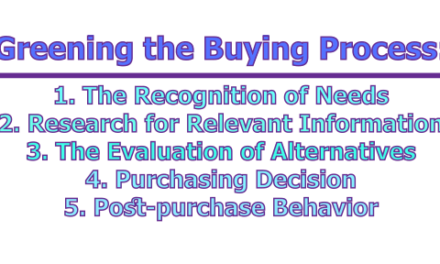Law of Supply and Demand in Economics:
The law of supply and demand is one of the fundamental principles of economics. It states that the price of a good or service will adjust to balance the quantity supplied (the amount that producers are willing and able to sell) with the quantity demanded (the amount that consumers are willing and able to buy).
When there is a high demand for a good or service and a limited supply, the price will increase as consumers compete for a limited number of items. On the other hand, if there is a low demand for a good or service and abundant supply, the price will decrease as producers lower their prices to attract buyers.
The law of supply and demand is a powerful tool for understanding market behavior and predicting price changes, but it is not a precise science. There are many other factors that can affect the price of a good or service, such as changes in technology, consumer preferences, taxes and regulations, and shifts in the overall economy.
However, the law of supply and demand is still an important concept in economics and is widely used by businesses, governments, and economists to make decisions about pricing, production, and resource allocation.
Factors Affecting Supply:
There are several factors that can affect the supply of goods or services in an economy:
- Production Costs: If the cost of producing goods or services increases, then the supply will decrease. This can be due to higher labor costs, raw materials costs, or increased regulatory requirements.
- Availability of Resources: The availability of resources, such as labor, raw materials, and capital, can affect the supply of goods or services, as producers need these resources to produce.
- Technology: Advances in technology can lead to increased efficiency in production, which in turn can increase the supply of goods or services. Conversely, outdated technology or a lack of investment in research and development can limit the supply of goods or services.
- Natural Disasters: Natural disasters such as earthquakes, hurricanes, and droughts can disrupt the production and distribution of goods and services, causing a decrease in supply.
- Changes in Resource Prices: The prices of the inputs used to produce goods or services, such as raw materials, can also affect its supply. For example, if the price of oil increases, the cost of producing goods that require oil as an input will also increase, reducing their supply.
- Government Policies: Government policies can have a significant impact on supply. For example, subsidies and tax incentives can encourage producers to increase supply, while taxes and regulations can limit it.
- Competition: Competition among producers can lead to increased supply as firms seek to increase market share. Conversely, a lack of competition can limit supply.
- Number of Suppliers: The number of suppliers in a market also affects the supply of goods or services. If there are many suppliers, the supply is likely to be abundant. However, if there are only a few suppliers, the supply can be limited.
- Expectations: Expectations about future market conditions can also impact the supply of goods or services. If producers expect the demand for goods to increase in the future, they may increase their production to meet this expected demand.
Overall, the supply of goods or services can be influenced by a variety of factors, and it is important to understand these factors in order to make accurate predictions about the supply and demand dynamics in a market.
Factors Affecting Demand:
There are several factors that can affect the demand for goods or services, including:
- Consumer Income: An increase in consumer income will generally lead to an increase in demand for goods and services, as people are able to afford to purchase more. Conversely, a decrease in consumer income will lead to a decrease in demand.
- Prices of Related Goods and Services: The prices of related goods and services can impact the demand for a particular product or service. For example, if the price of a substitute product decreases, the demand for the original product may decrease.
- Consumer Preferences and Tastes: Changes in consumer preferences and tastes can affect demand. For example, if a new product is introduced that is seen as more fashionable or desirable, the demand for similar products may decrease.
- Advertising and Marketing: Advertising and marketing campaigns can influence consumer behavior and increase demand for goods or services.
- Population Changes: Changes in the size or demographics of a population can affect demand. For example, an increase in the number of young people in a population may lead to an increase in demand for certain goods and services, such as fashion and technology.
- Expectations: Consumer expectations about future prices, income, or the economy can impact demand. For example, if consumers expect prices to rise in the future, they may increase their demand for goods and services in the present.
- Government Policies: Government policies, such as taxes, subsidies, or regulations, can impact the demand for goods and services. For example, a tax on a product or service will increase the price and reduce the demand, while a subsidy will lower the price and increase the demand.
- Economic Conditions: The overall state of the economy can also impact the demand for goods and services. During an economic expansion, consumer demand and spending typically increase, while during a recession, consumer demand and spending tend to decrease.
These factors can interact with one another and have a significant impact on the demand for goods and services in an economy. Understanding these factors is important for predicting and analyzing changes in demand and for making decisions about pricing and production
Necessary Law of Supply and Demand:
The law of supply and demand is essential for several reasons:
- It helps explain market behavior: The law of supply and demand provides a simple and intuitive explanation for why prices change in response to changes in supply and demand. It helps economists and business owners understand how market forces work to determine the price of goods or services.
- It provides a basis for economic predictions: By analyzing changes in supply and demand, economists and business owners can make predictions about how prices will change in response to various events, such as changes in consumer income, technological advancements, or government policies.
- It guides policy decisions: Governments use the law of supply and demand to make decisions about taxes, subsidies, and other economic policies. For example, by understanding how a tax on a product or service will affect supply and demand, policymakers can determine whether the tax will lead to higher prices and reduced consumption, or whether it will encourage producers to increase production.
- It informs business decisions: Business owners use the law of supply and demand to make decisions about pricing, production, and resource allocation. For example, by understanding how changes in consumer demand will affect the price of their products, they can decide whether to increase production or adjust their pricing strategy.
- Helps understand global markets: The law of supply and demand is not limited to a single market but can be applied to understand and analyze global markets as well. This can help to understand how changes in supply and demand in one market can impact prices and quantities in other markets.
In short, the law of supply and demand provides a valuable framework for understanding the behavior of markets and the interactions between consumers and producers. It is an essential tool for economists, policymakers, and business owners who seek to make informed decisions about pricing, production, and resource allocation.

Assistant Teacher at Zinzira Pir Mohammad Pilot School and College










